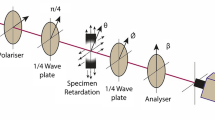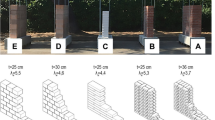Abstract
The short rod chevron-notch specimen has the advantages of (1) crack development at the chevron tip during the early stage of test loading and (2) convenient calculation of K Ic from the maximum test load and a calibration factor which depends only on the specimen geometry and manner of loading. For generalized application, calibration of the specimen over a range of specimen proportions and chevron-notch configurations is necessary. Such was the objective of this investigation, wherein calibration of the short rod specimen was made by means of experimental compliance measurements converted into dimensionless stress intensity factor coefficients.
Résumé
L'éprouvette en barreau court à entaille en chevron présente les avantages suivants:
-
1)
le développement de la fissure à l'extrémité du chevron s'effectue au cours des premiers stades de la mise sous charge
-
2)
un calcul pratique de K Ic correspondant à la charge d'essai maximale et un facteur de calibration dépendant uniquement de la géométrie de l'éprouvette et du mode de sollicitation peut être effectué.
Dans le cas d'une application plus générale, il est nécessaire de procéder à un calibrage de l'éprouvette sur une gamme suffisamment grande de proportions d'éprouvettes et de configurations d'entailles en chevron.
Tel était l'objectif de cette étude dans laquelle des calibrages d'éprouvette en barreau court ont été effectués à l'aide de mesures expérimentales de compliance, lesquelles ont été converties en coefficient sans dimension décrivant le facteur d'intensité de contrainte.
Similar content being viewed by others
References
D. Munz, R.T. Bubsey and J.E. Srawley, International Journal of Fracture 16 (1980) 359–374.
L.M. Barker, Engineering Fracture Mechanics, 9 (1977) 361–369.
L.M. Barker, in Fracture Mechanics of Ceramics, Volume 3-Flaws and Testing, R.C. Bradt et al., eds., Plenum Press, New York (1978) 483–494.
L.M. Barker and R.V. Guest, “Compliance Calibration of the Short Rod Fracture Toughness Specimen”, Report TR-78–20, Terra Tek, Inc., Salt Lake City (1978).
R.T. Bubsey, D.M. Fisher, M.H. Jones and J.E. Srawley in Experimental Techniques in Fracture Mechanics, Society for Experimental Stress Analysis Monograph 1, A.S. Kobayashi, ed., Iowa State University Press, Westport, CT, and Society for Experimental Stress Analysis, Cambridge (1973) 76–95.
W.F. BrownJr. and J.E. Srawley, Plane Strain Crack Toughness Testing of High Strength Metallic Materials, ASTM STP 410, American Society for Testing and Materials, Philadelphia (1966).
Author information
Authors and Affiliations
Rights and permissions
About this article
Cite this article
Bubsey, R.T., Munz, D., Pierce, W.S. et al. Compliance calibration of the short rod chevron-notch specimen for fracture toughness testing of brittle materials. Int J Fract 18, 125–133 (1982). https://doi.org/10.1007/BF00019637
Received:
Issue Date:
DOI: https://doi.org/10.1007/BF00019637




